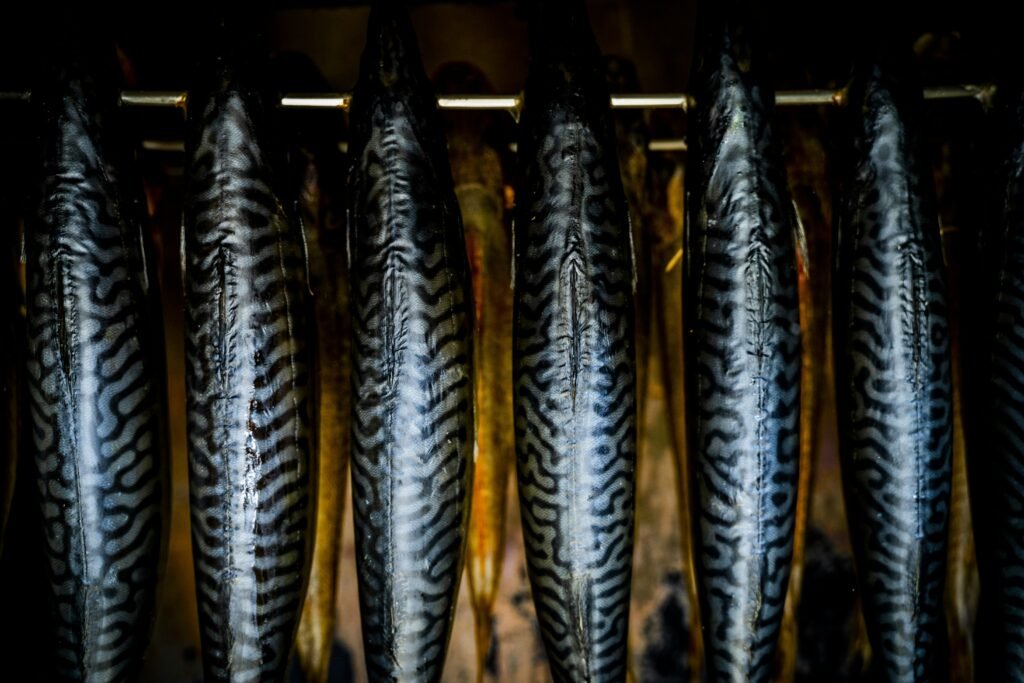Have you ever wondered what makes smoked jerky so irresistibly delicious? It’s that perfect blend of smoky aroma, savory flavor, and just the right amount of chewiness that gets us every time. The good news is, making smoked jerky at home isn’t a secret reserved only for pitmasters or gourmet chefs. We’re here to guide you through the process, throwing in some humor and conversation along the way as we explore the wonderful world of DIY smoked jerky.

This image is property of images.unsplash.com.
What is Smoked Jerky?
Let’s start with the basics. Smoked jerky is essentially marinated meat that’s beenslow-cooked and flavored with smoke. This process not only adds a layer of deliciousness but also preserves the meat, allowing it to have a longer shelf life. It’s a little like magic, but instead of a wand, we use a smoker.
The Charm of Smoking
Why is smoking such a famed method for jerky? Well, smoking doesn’t just cook the meat; it imbues it with flavors that baking or frying can’t touch. It’s like a culinary paintbrush sweeping your meat canvas with robust tastes and scents. The smoke works its way into the fibers of the meat, leaving you with jerky that has a depth of taste reminiscent of campfires and adventure.
Choosing Your Meat
Before we get ahead of ourselves, we need the right meat. The heart of any good jerky revolves around choosing the right slices of beef, chicken, or even game meats.
Going for Beef
For classic jerky, beef is usually the star of the show. Cuts like top round, bottom round, or flank steak work wonders. These cuts are lean, affordable, and easy to work with. Remember, we’re aiming for lean meat because excess fat can spoil and won’t dry out the way we need it to for perfect jerky.
Table: Recommended Beef Cuts for Jerky
| Beef Cut | Description |
|---|---|
| Top Round | Lean, affordable, easy to slice |
| Bottom Round | Similar to top round, slightly more tender |
| Flank Steak | Lean, with a rich and bold flavor |
| Sirloin Tip | Tender, slightly more expensive option |
Exploring Beyond Beef
While beef is the reigning champion of jerky, there’s no reason not to explore. Turkey and chicken make for excellent light jerky. Their mild flavors can be wonderfully amplified by the right marinade. Game meats such as venison or bison, though a bit trickier to get, result in delightfully unique jerky options.
Marinating Magic
Here’s where the fun starts. Marinades are the life of jerky, swirling in flavor and creating that irresistible taste. We can go sweet, savory, spicy, or a blend of all. Marinades also tenderize the meat, creating a taste symphony tailored by your taste buds.
Crafting Your Marinade
Creating your marinade is like crafting a potion – mix your ingredients, adjust for taste, and let them work their magic. A few key components make up the backbone of a spectacular marinade:
- Soy Sauce: Acts as our salty base.
- Worcestershire Sauce: Adds depth and a bit of a zest.
- Honey or Brown Sugar: To counter the saltiness with a touch of sweetness.
- Liquid Smoke or Smoked Paprika: They give us that initial smoky punch before we even hit the smoker.
- Garlic and Onion Powder: For that aromatic magic touch.
- Black Pepper and Other Spices: This is where we let loose and get creative.
The Art of Marination
Now that we’ve got our concoction, it’s time to let our meat swim in its flavorful pool for at least 12 hours. Patience is key here. This process is like letting a good story develop – the longer it sits, the deeper it becomes.
Time and Temperature
We usually recommend marinating overnight in the refrigerator. This is optimal for that rich infusion of flavors. The fridge is crucial here because it keeps the meat safe from any microbial activity.

This image is property of images.unsplash.com.
Smoking Equipment: A Quick Guide
As with any creative process, having the right tools is critical to success. Our tool of choice? The smoker. However, in its absence, an oven can be a handy substitute.
The Smoker
While we’d love to imagine ourselves with a grand smoker ready to roar, there are variations suited to almost every kind of setting and budget.
- Charcoal Smokers: Traditional, offer great flavor.
- Electric Smokers: User-friendly, consistent temperatures.
- Gas Smokers: Quick heat, consistent but less smoke flavor than charcoal.
- Pellet Smokers: Versatile, impart a delicious woody smoke flavor.
Table: Types of Smokers
| Smoker Type | Pros | Cons |
|---|---|---|
| Charcoal | Traditional, rich smoke flavor | Can be time-consuming |
| Electric | Easy to use, consistent temperature | Might lack depth of flavor |
| Gas | Quick heating, easy temperature control | Less smoky flavor |
| Pellet | Versatile and flavorful | More expensive, needs pellets |
Smoking Without a Smoker
But let’s not panic if a smoker isn’t in sight. An oven, paired with a dash of patience, works just fine. We just need to ensure low, steady temperatures and remember to turn the meat frequently.
Smoking Process: Step by Step
Our meat has marinated, and the equipment is ready. It’s time to conjure up this batch of deliciousness. Here’s how we do it.
Prepping the Meat
We begin by draining our marinated meat and patting it dry. This helps achieve a satisfying, chewy texture. Keeping the pieces uniform, about a quarter-inch thick, ensures they cook evenly.
Setting Up the Smoker
We preheat our smoker to approximately 160-180°F (70-80°C). Just like when starting a great book, we need a gentle setup to allow the flavors to develop gradually.
Smoking Away
Place the meat strips directly on the racks or use skewers if you prefer. You can even opt for smoking mats if small pieces are at risk of falling through grates. Now, close the lid and let the smoke weave its magic for about 3 to 6 hours.
Monitoring and Rotating
Here, we play the part of a vigilant guardian. Every hour or so, it’s a wise move to rotate the pieces for an even smoke. This isn’t just recommended; it’s an excuse to check in on the progress and perhaps sneak in a small taste.

This image is property of images.unsplash.com.
Testing for Doneness
Time’s up! But how do we know if it’s done? Our jerky should be flexible but not break when bent. It’s like that perfect balance of a good joke – firm yet yielding in all the right ways.
The Bend Test
Take a piece and bend it slightly. It should tear to reveal white fibers but not break completely. This is your signal that the jerky is ready. If not, let it linger in the smoke a little longer.
Storing Your Creation
Once cooled, store your jerky in airtight containers. Humidity is its enemy, so keep it safe and dry. Properly stored, our jerky should last a few weeks.
Tips for Longevity
For longevity, vacuum seals or freezing can extend its shelf life. If sharing isn’t on the agenda soon, these techniques keep them fresh for future munching delights.
Enhancing Your Jerky Experience
Great jerky speaks for itself, but we can take it up a notch with some finishing touches. After all, why not sprinkle a bit of extra magic?
Flavor Boosting
Consider adding a sprinkle of chili powder, garlic salt, or even brushing a light glaze post-smoking for some additional zing. Alternatively, a sprinkle of cracked black pepper before serving is always a welcome dash of flavor.
Experimentation Station
What’s the fun without a bit of experimentation? We’re the pioneers in our kitchen, and nothing’s stopping us from creating wacky, wonderful flavors tailored to our cravings.
Flavor Fantasies
Why not try cinnamon honey mesquite or perhaps a fiery sriracha-lime blend? Here’s a playground for our imagination, and we can explore and create our signature twist on smoked jerky masterpieces.
Wrapping It Up
Creating smoked jerky is more than a process; it’s an adventure of flavors, smells, and tales that gather around the smoker. Home-made jerky marks a culinary triumph that is as rewarding to make as it is to taste. It’s that blend of tradition, patience, and creativity that culminates in every bite.
Let’s remember, every batch tells a story, every taste holds a memory. With this ultimate guide, not only have we touched our inner foodie, but perhaps we’ve sparked the flame of a lifelong savory pursuit.
As we dig into our fresh batch of jerky, we’ve not only learned the art of smoking but also invested in a storytelling journey that we can share with friends and family. Now, it’s time to savor the fruits — or rather, the meats — of our labor. So go ahead, grab a piece, and relish this delightful mix of craft and flavor.



